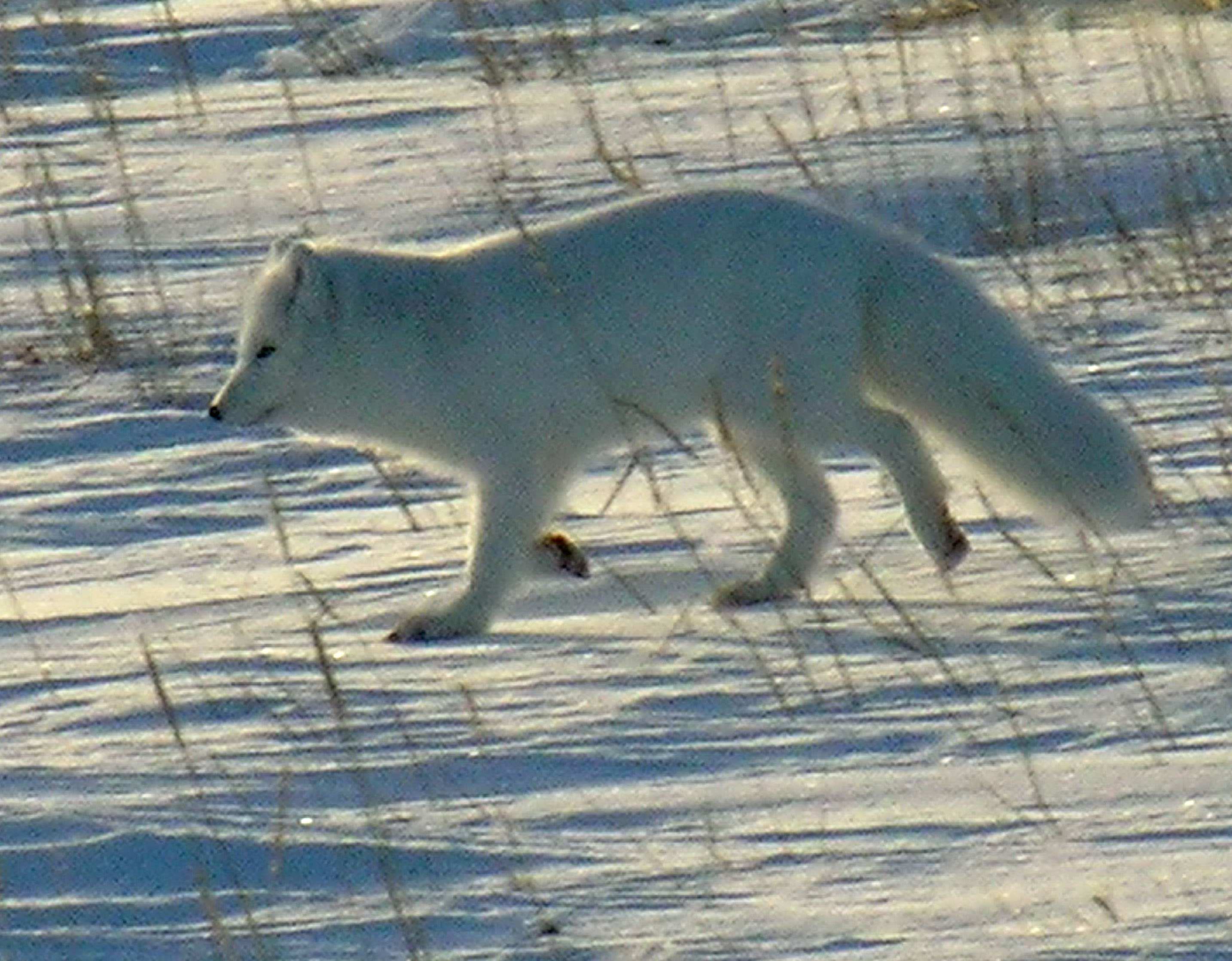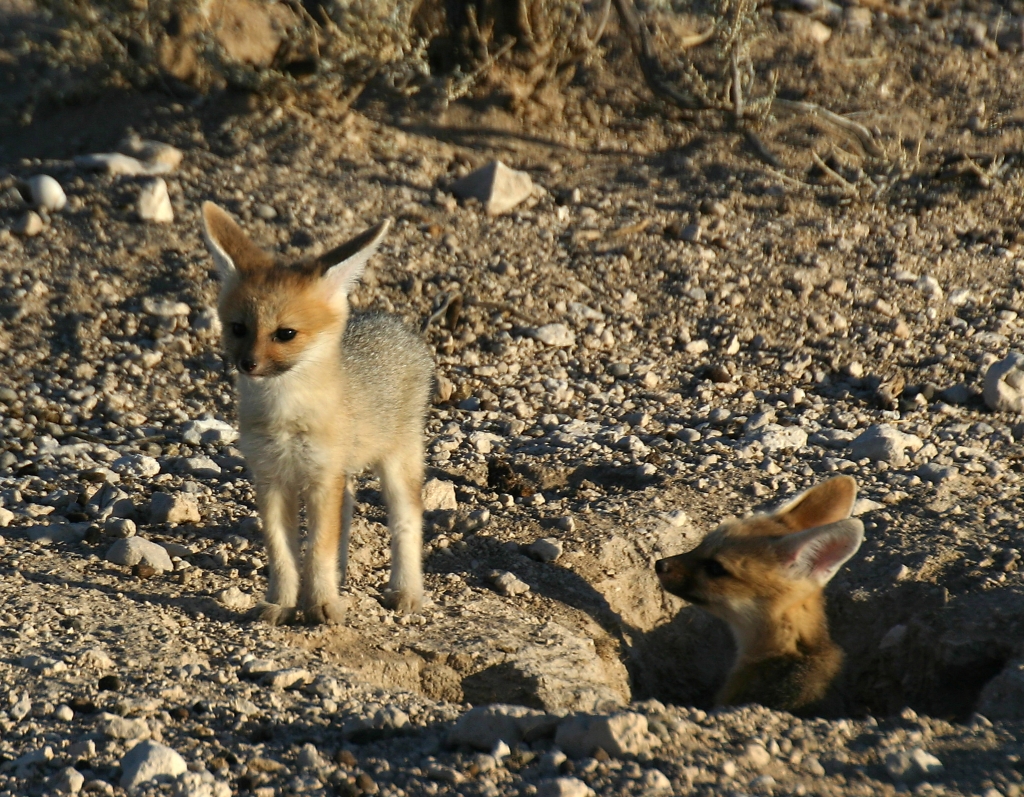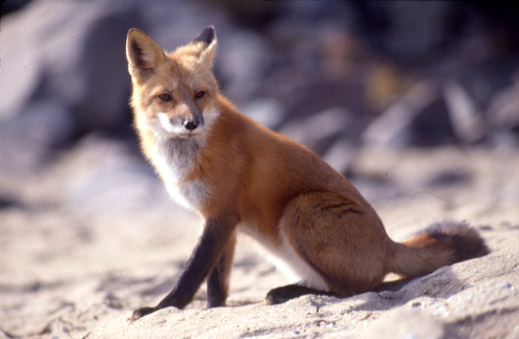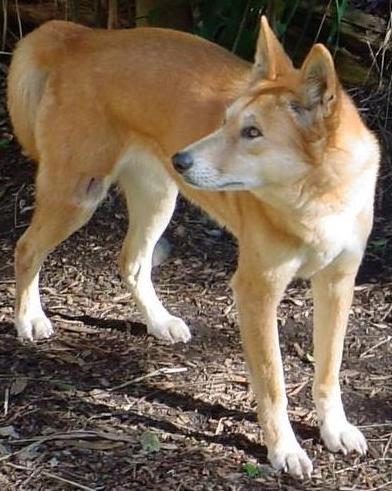Difference between revisions of "Translations:Adventist Youth Honors Answer Book/Nature/Dogs/6/en"
(Importing a new version from external source) |
(Importing a new version from external source) |
||
| Line 5: | Line 5: | ||
| image = Polarfuchs 1 2004-11-17.jpg | | image = Polarfuchs 1 2004-11-17.jpg | ||
| description = The Arctic fox, also known as the polar fox, is a small fox native to cold Arctic regions of the Northern Hemisphere. Arctic foxes will eat pretty much anything. Their prey includes voles, lemmings, hares, ground squirrels, and bird eggs. Foxes living on the coast also eat shellfish, sea urchins, dead seals and fish, beached whales, and nesting seabirds. In winter when food is scarce, they may follow a polar bear and after the bear makes a kill, eats and leaves, they will steal what ever scraps of meat are left. In winter, their light coat protects them from predators, esp. polar bears, by blending in to the white snow. | | description = The Arctic fox, also known as the polar fox, is a small fox native to cold Arctic regions of the Northern Hemisphere. Arctic foxes will eat pretty much anything. Their prey includes voles, lemmings, hares, ground squirrels, and bird eggs. Foxes living on the coast also eat shellfish, sea urchins, dead seals and fish, beached whales, and nesting seabirds. In winter when food is scarce, they may follow a polar bear and after the bear makes a kill, eats and leaves, they will steal what ever scraps of meat are left. In winter, their light coat protects them from predators, esp. polar bears, by blending in to the white snow. | ||
| + | }} | ||
| + | ===Pale Fox === | ||
| + | {{Species id | ||
| + | | latin_name = Vulpes pallida | ||
| + | | common_name = Pale Fox | ||
| + | | image = Keulemans pale fox.png | ||
| + | | description = The Pale Fox is a species of fox which inhabits the Sahel from Senegal in the west to Sudan in the east. It is widespread throughout the Sahel but its environmental status is described as "data deficient" due to lack of intensified study of the pale fox in the wild. The pale fox is long-bodied with relatively short legs and a narrow muzzle. Its ears are long and rounded at the tip. Its tail is bushy and black-tipped. The upperpart of its body has a pale sandy color, while the underpart is whitish. A dark ring surrounds the fox's eyes. | ||
| + | }} | ||
| + | ===Cape Fox === | ||
| + | {{Species id | ||
| + | | latin_name = Vulpes chama | ||
| + | | common_name = Cape Fox | ||
| + | | image = Kapfuchs-nachwuchs.jpg | ||
| + | | description = The Cape Fox has black or silver gray fur with flanks and underside in light yellow. The tip of its tail is always black. The Cape Fox is found in Southern Africa from Zimbabwe to Angola. It prefers the open savanna and semi-arid regions in southwestern Africa, from Southern Zimbabwe to the Cape province. | ||
| + | }} | ||
| + | ===Red Fox === | ||
| + | {{Species id | ||
| + | | latin_name = Vulpes vulpes | ||
| + | | common_name = Red Fox | ||
| + | | image = Vulpes vulpes sitting.jpg | ||
| + | | description =The Red Fox is the most familiar of the foxes. In Britain and Ireland, where there are no longer any other native wild canids, it is referred to simply as the "Fox". It has the widest range not just of any fox but of any terrestrial carnivore. As its name suggests, its fur is predominantly reddish-brown | ||
| + | }} | ||
| + | ===Gray Wolf === | ||
| + | {{Species id | ||
| + | | latin_name = Canis lupus | ||
| + | | common_name = Gray Wolf | ||
| + | | image = Canis lupus laying in grass.jpg | ||
| + | | description = The Gray Wolf, also known as Timber Wolf or Wolf, shares a common ancestry with the domestic dog (Canis lupus familiaris), as evidenced by DNA sequencing and genetic drift studies. Gray wolves were once abundant and distributed over much of North America, Eurasia, and the Middle East. Today, for a variety of human-related reasons including widespread habitat destruction and excessive hunting, wolves inhabit only a very limited portion of their former range. Though listed as a species of least concern for extinction worldwide, for some regions including the Continental United States, the species is listed as endangered or threatened. | ||
| + | }} | ||
| + | ===Coyote === | ||
| + | {{Species id | ||
| + | | latin_name = Canis latrans | ||
| + | | common_name = Coyote | ||
| + | | image = Canis latrans.jpg | ||
| + | | description = Coyotes are native to North America and are found from Alaska, U.S. to as far south as Panama. European explorers first encountered these canines during their travels in the American Southwest. They may occasionally assemble in small packs, but naturally hunt alone. Coyotes live an average of about 6 to 10 years. | ||
| + | }} | ||
| + | ===Dingo === | ||
| + | {{Species id | ||
| + | | latin_name =Canis lupus dingo | ||
| + | | common_name = Dingo | ||
| + | | image = Dingo3.jpg | ||
| + | | description = The dingo is a type of wild dog, probably descended from the Indian Wolf (Canis lupus pallipes). It is commonly described as an Australian wild dog, but is not restricted to Australia. Modern dingoes are found throughout Southeast Asia, mostly in small pockets of remaining natural forest, and in mainland Australia, particularly in the north. | ||
}} | }} | ||
Latest revision as of 19:01, 10 January 2021
Arctic Fox
Arctic Fox (Alopex lagopus)
Description: The Arctic fox, also known as the polar fox, is a small fox native to cold Arctic regions of the Northern Hemisphere. Arctic foxes will eat pretty much anything. Their prey includes voles, lemmings, hares, ground squirrels, and bird eggs. Foxes living on the coast also eat shellfish, sea urchins, dead seals and fish, beached whales, and nesting seabirds. In winter when food is scarce, they may follow a polar bear and after the bear makes a kill, eats and leaves, they will steal what ever scraps of meat are left. In winter, their light coat protects them from predators, esp. polar bears, by blending in to the white snow.
Pale Fox
Pale Fox (Vulpes pallida)
Description: The Pale Fox is a species of fox which inhabits the Sahel from Senegal in the west to Sudan in the east. It is widespread throughout the Sahel but its environmental status is described as "data deficient" due to lack of intensified study of the pale fox in the wild. The pale fox is long-bodied with relatively short legs and a narrow muzzle. Its ears are long and rounded at the tip. Its tail is bushy and black-tipped. The upperpart of its body has a pale sandy color, while the underpart is whitish. A dark ring surrounds the fox's eyes.
Cape Fox
Cape Fox (Vulpes chama)
Description: The Cape Fox has black or silver gray fur with flanks and underside in light yellow. The tip of its tail is always black. The Cape Fox is found in Southern Africa from Zimbabwe to Angola. It prefers the open savanna and semi-arid regions in southwestern Africa, from Southern Zimbabwe to the Cape province.
Red Fox
Red Fox (Vulpes vulpes)
Description: The Red Fox is the most familiar of the foxes. In Britain and Ireland, where there are no longer any other native wild canids, it is referred to simply as the "Fox". It has the widest range not just of any fox but of any terrestrial carnivore. As its name suggests, its fur is predominantly reddish-brown
Gray Wolf
Gray Wolf (Canis lupus)
Description: The Gray Wolf, also known as Timber Wolf or Wolf, shares a common ancestry with the domestic dog (Canis lupus familiaris), as evidenced by DNA sequencing and genetic drift studies. Gray wolves were once abundant and distributed over much of North America, Eurasia, and the Middle East. Today, for a variety of human-related reasons including widespread habitat destruction and excessive hunting, wolves inhabit only a very limited portion of their former range. Though listed as a species of least concern for extinction worldwide, for some regions including the Continental United States, the species is listed as endangered or threatened.
Coyote
Coyote (Canis latrans)
Description: Coyotes are native to North America and are found from Alaska, U.S. to as far south as Panama. European explorers first encountered these canines during their travels in the American Southwest. They may occasionally assemble in small packs, but naturally hunt alone. Coyotes live an average of about 6 to 10 years.
Dingo
Dingo (Canis lupus dingo)
Description: The dingo is a type of wild dog, probably descended from the Indian Wolf (Canis lupus pallipes). It is commonly described as an Australian wild dog, but is not restricted to Australia. Modern dingoes are found throughout Southeast Asia, mostly in small pockets of remaining natural forest, and in mainland Australia, particularly in the north.







